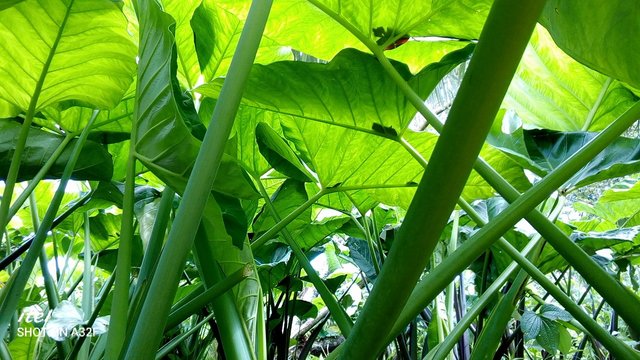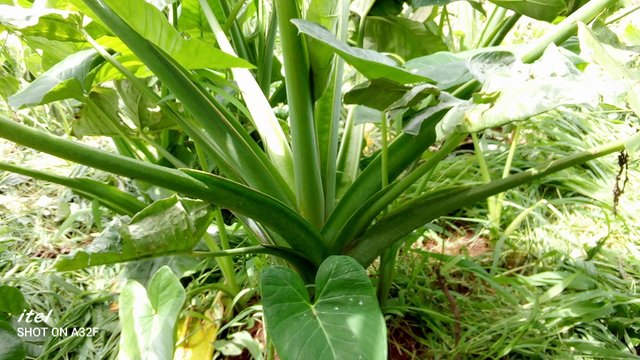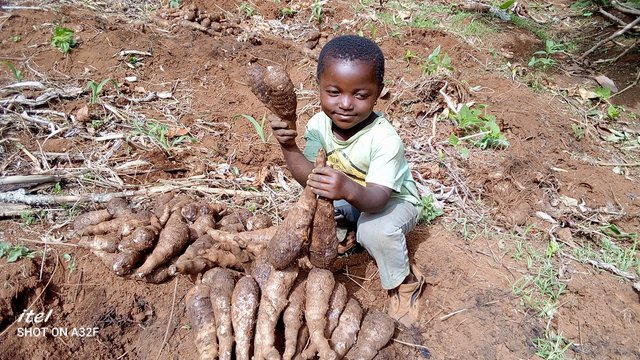Greetings fellow steemians it's a another day to be with you all again. A day to explore and implore the knowledge of cultivating coco yams in a way that it doesn't influence its reliability as a food crop.

Coco yams or colocasia is a root vegetables with heart like leaves . Cocoyams are herbaceous perennial plants belonging to the family Araceae and are grown primarily for their edible roots, although all parts of the plant are edible. Cocoyams that are cultivated as food crops belong to either the genus Colocasia or the genus Xanthosoma . It will perform well in potassium rich soils as it is a heavy feeder of potassium nitrates.
Colocasia being a lover of potassium rich soils have influence many farmers especially in Cameroon and in my community to believe that cultivating coco yams only on ankara potassium rich beds is the only best practice to grow the tubers. The practice is not environmentally friendly as it involves the constant burning of farm forage along side heeps of soils, which in turn exposes the soil to erosion and increases its accidity level. Soil organisms are lost in the process and there is mineral exploitation from the farm as most farm recidues are gathered up and burnt in the process to form ankara beds.

In the above practice the yeilds from the first year are good but during the previous years the farm is vulnerable to erosion and nutrient lost as the burnt soil becomes too weak to hold itself in place. Coco yams grown In this practice is pallatable, it's not reliable or durable as most often the too much accidity causes it to get rotten.
In another farm experience , it was proven that cultivating coco yams rather in well composted farm beds is reliable and sustainable. Gathering up farm recidues and building beds with just green or dry forage is enough for cultivating coco yams. Potassium can rather be added into it along side manure or the compost its self . Legumes like Sesbania and Tephrosia could also be intergrated amongst it to enrich the nitrogen content of the soil. When you Cocoyams from this compost soils it is palatable, very tasty and sweet, it can last more than six months if you can store away from rodents, it doesn't get rotten too
Thanks for reading hope the difference is clear now.

wow! great write up.
I guess you are an agric technician.
Downvoting a post can decrease pending rewards and make it less visible. Common reasons:
Submit
Interesting post, and educative too. Thank you for this
Downvoting a post can decrease pending rewards and make it less visible. Common reasons:
Submit
Nice wrtup .the cocoyam of a thing has now become gold very expensive
Downvoting a post can decrease pending rewards and make it less visible. Common reasons:
Submit
Ooooo I can see the passion in what you do. When you master your work and do the best surely the result will just be what I read. Courage
Downvoting a post can decrease pending rewards and make it less visible. Common reasons:
Submit